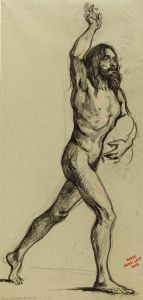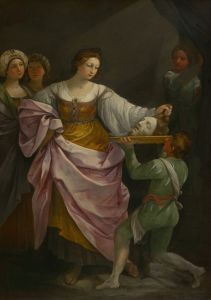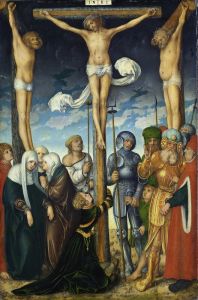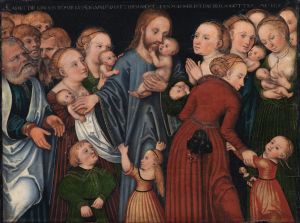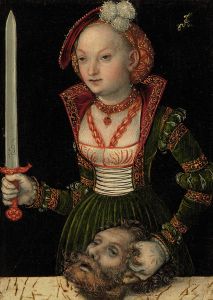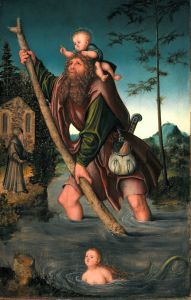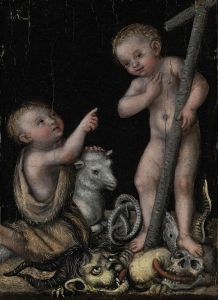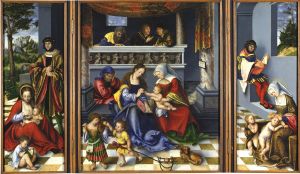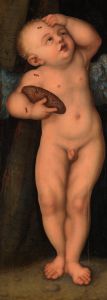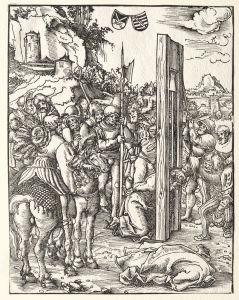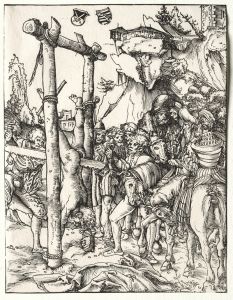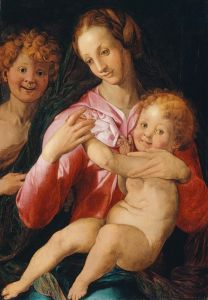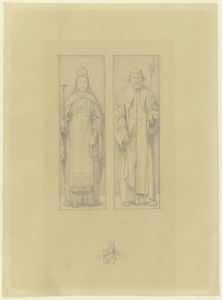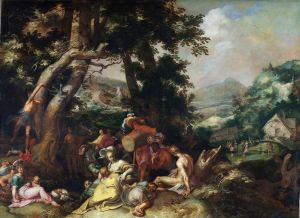
Virgin Mary with the Child and Saint John the Baptist
A hand-painted replica of Lucas Cranach the Elder’s masterpiece Virgin Mary with the Child and Saint John the Baptist, meticulously crafted by professional artists to capture the true essence of the original. Each piece is created with museum-quality canvas and rare mineral pigments, carefully painted by experienced artists with delicate brushstrokes and rich, layered colors to perfectly recreate the texture of the original artwork. Unlike machine-printed reproductions, this hand-painted version brings the painting to life, infused with the artist’s emotions and skill in every stroke. Whether for personal collection or home decoration, it instantly elevates the artistic atmosphere of any space.
Lucas Cranach the Elder, a prominent German Renaissance painter, created the artwork "Virgin Mary with the Child and Saint John the Baptist." Cranach was known for his portraits, religious subjects, and mythological scenes, and he played a significant role in the art of the Reformation period. His works are characterized by their attention to detail, vibrant colors, and the incorporation of both Gothic and Renaissance elements.
"Virgin Mary with the Child and Saint John the Baptist" is a testament to Cranach's skill in religious painting, a genre that was highly significant during his time. The painting depicts the Virgin Mary holding the Christ Child, with Saint John the Baptist as a child, often shown in a gesture of adoration or interaction with Jesus. This composition is a common theme in Christian art, symbolizing the close relationship between Jesus and John the Baptist, who is considered his forerunner.
Cranach's depiction of the Virgin Mary is typically serene and graceful, reflecting the idealized beauty of the period. The Christ Child is often portrayed with a sense of innocence and divine wisdom, while the young John the Baptist is usually shown with attributes such as a lamb or a cross, symbolizing his future role in heralding Jesus as the Messiah. The interaction between the figures is often tender and intimate, emphasizing the human and divine connection.
The painting is likely to exhibit Cranach's distinctive style, which includes elongated figures, intricate detailing, and a harmonious use of color. His works often feature a landscape background, providing depth and context to the scene. Cranach's ability to blend religious symbolism with a naturalistic portrayal of figures made his works highly sought after during his lifetime.
Lucas Cranach the Elder was a court painter for the Electors of Saxony and was deeply involved in the cultural and political shifts of his time, including the Protestant Reformation. His close association with Martin Luther and other reformers influenced his work, leading to the creation of art that supported the new religious ideas. However, Cranach also continued to produce Catholic-themed works, demonstrating his versatility and the demand for his art across different religious contexts.
The exact date of creation for "Virgin Mary with the Child and Saint John the Baptist" is not specified, but it would have been produced during Cranach's active years, which spanned from the early 1500s until his death in 1553. His workshop was prolific, and many paintings attributed to him were created with the assistance of his sons and apprentices, a common practice at the time.
Cranach's legacy is significant, as he left behind a vast body of work that continues to be studied and admired for its artistic and historical value. His paintings are housed in major museums and collections worldwide, where they continue to attract the attention of art historians and enthusiasts alike. "Virgin Mary with the Child and Saint John the Baptist" is an example of his enduring contribution to the art of the Northern Renaissance, reflecting both the religious devotion and the artistic innovation of the period.





